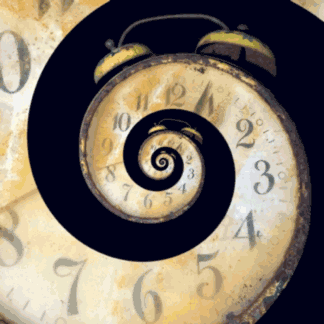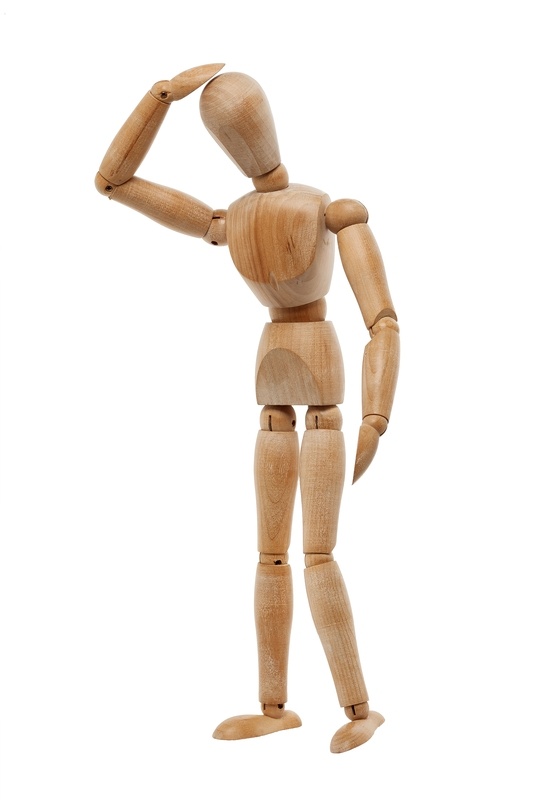by Maureen Vogel
Litigation Graphics Artist
A2L Consulting
Before becoming an artist here at A2L Consulting, I was what you might call a typical graphic designer. I specialized in creating visual art, primarily for nonprofit organizations in the Washington, DC area. My primary focus was usually to visually convey a single important message with each graphic. I’d never concerned myself personally or professionally with the world of litigation.
When I was a graphic designer, the software platforms Photoshop, Illustrator and InDesign were my standard canvas. However, as a litigation graphics artist, I usually stick to PowerPoint as the fundamental visual presentation tool. Although graphics may often incorporate visual concepts developed outside the PowerPoint platform, this is the foundation for presentation, and much of my artwork is now done in PowerPoint itself (and sometimes in Keynote for Apple devices). PowerPoint is a surprisingly powerful tool. In addition, I have noticed that there are quite a few differences between graphic design and litigation graphics art.
Here are some of the differences I have observed that I find most interesting.
1. Color psychology is very important in litigation-focused graphics.
 Yes, color psychology is important in the graphic design realm as well. But in litigation graphics, using the wrong colors in court could offend your audience or negatively affect their mood. That would be a catastrophe.
Yes, color psychology is important in the graphic design realm as well. But in litigation graphics, using the wrong colors in court could offend your audience or negatively affect their mood. That would be a catastrophe.
One example I’ve encountered at work was when the client asked me to change a list of people’s names on a PowerPoint slide from black to red. Red is a color we generally try to avoid in PowerPoint slides because it can increase aggressive feelings in audience members (jurors). Also, I had my own personal aversion to red; depending on the culture, the color red can also invoke very different emotions. For example, in Japan, my home country, writing a person’s name in red means that person will die soon. This would accordingly evoke a very specific emotion in the wrong audience. Because the client’s goal in changing the black font to red was simply to make it more visible and not necessarily to invoke feelings of alarm or aggression toward the people listed, we suggested a brighter blue font instead of red. Almost any color you can think of invokes a specific emotional response, so plan accordingly for your litigation graphics.
A2L is looking for talented graphic designers! Read more here.
2. Litigation design tends to have uncertain or very tight deadlines
 When I was a graphic designer and did freelance graphic design work, I usually had a good idea of when the project needed to be done. This is not the case with litigation graphics. But perhaps it should be.
When I was a graphic designer and did freelance graphic design work, I usually had a good idea of when the project needed to be done. This is not the case with litigation graphics. But perhaps it should be.
As a litigation graphic artist, I sometimes feel like a doctor on call. Trial dates can be changed at any time, and projects that were once due in a week can all of a sudden be due much sooner.
If you want your litigation graphic artist to create very persuasive demonstratives, make sure to devote enough time to brainstorm what graphics are needed to support your client’s story and also give the artist ample time to complete the work. This seems simple enough, but I see that that trial teams more often than not wait until what seems like the last minute to begin to develop the visual component of their trial presentation. From working with A2L, I know that this does not fit with the best practices. I suggest that trial teams begin thinking about how they’ll present their cases to a jury (or judge) many months in advance of actually needing to do so. This gives them enough time to plan for the arguments and to have a professional team craft winning graphics to go with those arguments.
3. Creativity is often influenced by the judge
 As a graphic designer, my task was to portray information in the most creative way possible. Litigation design, on the other hand, usually isn’t a contest to see how artistic you can be (it helps, but that’s not the main focus). The judge often will determine the level of creativity required or allowed for courtroom graphics.
As a graphic designer, my task was to portray information in the most creative way possible. Litigation design, on the other hand, usually isn’t a contest to see how artistic you can be (it helps, but that’s not the main focus). The judge often will determine the level of creativity required or allowed for courtroom graphics.
Before clients hire us, they typically need to get permission from the judge for the types of demonstratives allowed at trial (e.g., PowerPoint, posters, videos, etc.). Once the types of demonstratives are decided upon, we begin creating graphics accordingly. Sometimes a set of visually pleasing graphics that we’ve created need to be reduced to what one might call “bland” visuals because according to the client, “the judge is very conservative.
For those who believe they will be shot down for being too creative, consider that sometimes an element of surprise is a good thing. Creativity can be conservative, and higher style can be more engaging to even the most conservative of audiences. Words don’t persuade; arguments do. I suggest crafting visuals that convey ideas and emotions rather than pure language – asking an audience, be it a judge or juror, to remember words and more words is not engaging.
Overall, there are quite a few differences between graphic art and litigation-focused graphic art; however, in the end, they both require knowledge of the foundations of art and design – which are concepts appreciated by any audience.
A2L is looking for talented graphic designers! Read more here.
A2L Consulting articles focused on demonstrative evidence, trial graphics, and litigation graphics consulting:
- What Does A Case-Winning Trial Graphic Look Like?
- Good-Looking Graphic Design ≠ Good-Working Visual Persuasion
- How Much Text on a PowerPoint Slide is Too Much?
- 7 Lessons of Design That are Universal (in Trial Graphics or Anywhere)
- The 12 Worst PowerPoint Mistakes Litigators Make
- New Webinar - PowerPoint Litigation Graphics - Winning by Design
- 6 Studies That Support Litigation Graphics in Courtroom Presentations
- 16 PowerPoint Litigation Graphics You Won't Believe Are PowerPoint
- 7 Ways to Avoid Making Your PowerPoint Slides Your Handout
- Why reading PowerPoint litigation graphics slides hurts your trial presentation's effectiveness
- 5 Inspiring Information Design/Data Visualization Sites for Lawyers
- Why shouldn't I just make my own PowerPoint slides?
- 5 Problems with Trial Graphics
- 12 Questions to Ask When Hiring a Trial Graphics Consultant
- Why Trial Tech ≠ Litigation Graphics
- 13 Reasons Law Firm Litigation Graphics Departments Have Bad Luck
- 7 Questions Will Save You Money with Litigation Graphics Consultants
- 5 Trial Graphics That Work Every Time




Leave a Comment